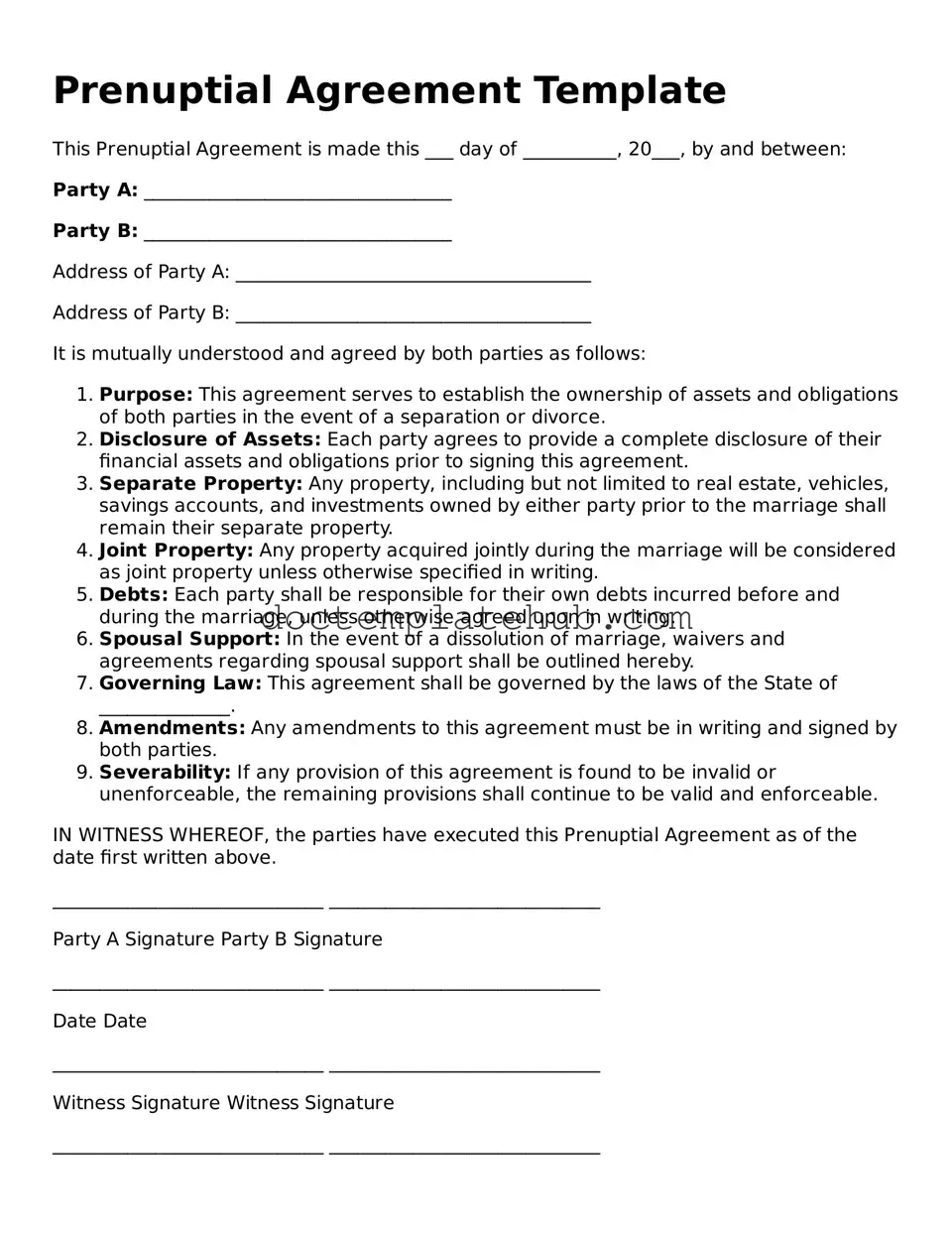A Cohabitation Agreement is similar to a prenuptial agreement in that it outlines the financial and personal responsibilities of two individuals living together. This document is often used by couples who choose to cohabitate without marrying. Like a prenuptial agreement, it can address property division, debt responsibility, and other important matters should the relationship end. Both documents aim to protect the interests of each party and provide clarity regarding their rights and obligations.
A Postnuptial Agreement serves a similar purpose to a prenuptial agreement, but it is executed after the couple is married. This document can address the same issues as a prenuptial agreement, such as asset division and financial responsibilities. Couples might choose a postnuptial agreement to reflect changes in their financial situation or to clarify their intentions after marriage. Both agreements require mutual consent and understanding to be enforceable.
A Separation Agreement is another document akin to a prenuptial agreement. It is created when a couple decides to live apart but remains legally married. This document outlines the terms of their separation, including child custody, support, and property division. While a prenuptial agreement is established before marriage, a separation agreement is often the result of a decision to part ways, serving to protect the interests of both parties during the separation process.
An Estate Plan can also be compared to a prenuptial agreement, as both documents deal with the distribution of assets. An estate plan includes wills, trusts, and other directives that dictate how a person's assets will be managed and distributed after their death. Like a prenuptial agreement, an estate plan can help prevent disputes among heirs and ensure that an individual's wishes are honored. Both documents require careful consideration of assets and intentions.
A Will, specifically, is similar to a prenuptial agreement in that it addresses the distribution of assets upon death. A will specifies who will inherit property and possessions, much like a prenuptial agreement outlines asset division during a divorce. Both documents provide a framework for managing assets and can help avoid conflicts among surviving family members. They require clear communication of intentions to be effective.
A Trust Agreement shares similarities with a prenuptial agreement in terms of asset management. A trust allows a person to place their assets in a legal entity for the benefit of specific individuals. This can protect assets from creditors and ensure they are distributed according to the grantor's wishes. Like a prenuptial agreement, a trust agreement requires careful planning and consideration of how assets will be handled over time.
A Business Partnership Agreement is akin to a prenuptial agreement when couples own a business together. This document outlines the roles, responsibilities, and profit-sharing arrangements between partners. It can also address what happens to the business in the event of a partner's departure or death. Just as a prenuptial agreement clarifies financial matters in a marriage, a partnership agreement does the same in a business context.
The importance of legal agreements extends beyond personal relationships to various fields, including business transactions and health care considerations, where protective measures are crucial. A well-crafted agreement can safeguard parties against unforeseen liabilities, echoing the principles found in documents such as a Hold Harmless Agreement form, which can effectively mitigate risks involved in certain activities. For those looking for specific templates or guidance on such agreements, resources like smarttemplates.net can provide valuable assistance.
An Investment Agreement can also be compared to a prenuptial agreement. This document outlines the terms under which individuals invest together, detailing contributions, profit-sharing, and exit strategies. Both agreements aim to protect the interests of each party involved, ensuring that all parties understand their rights and obligations. Clear communication and mutual agreement are essential in both cases to avoid future disputes.
